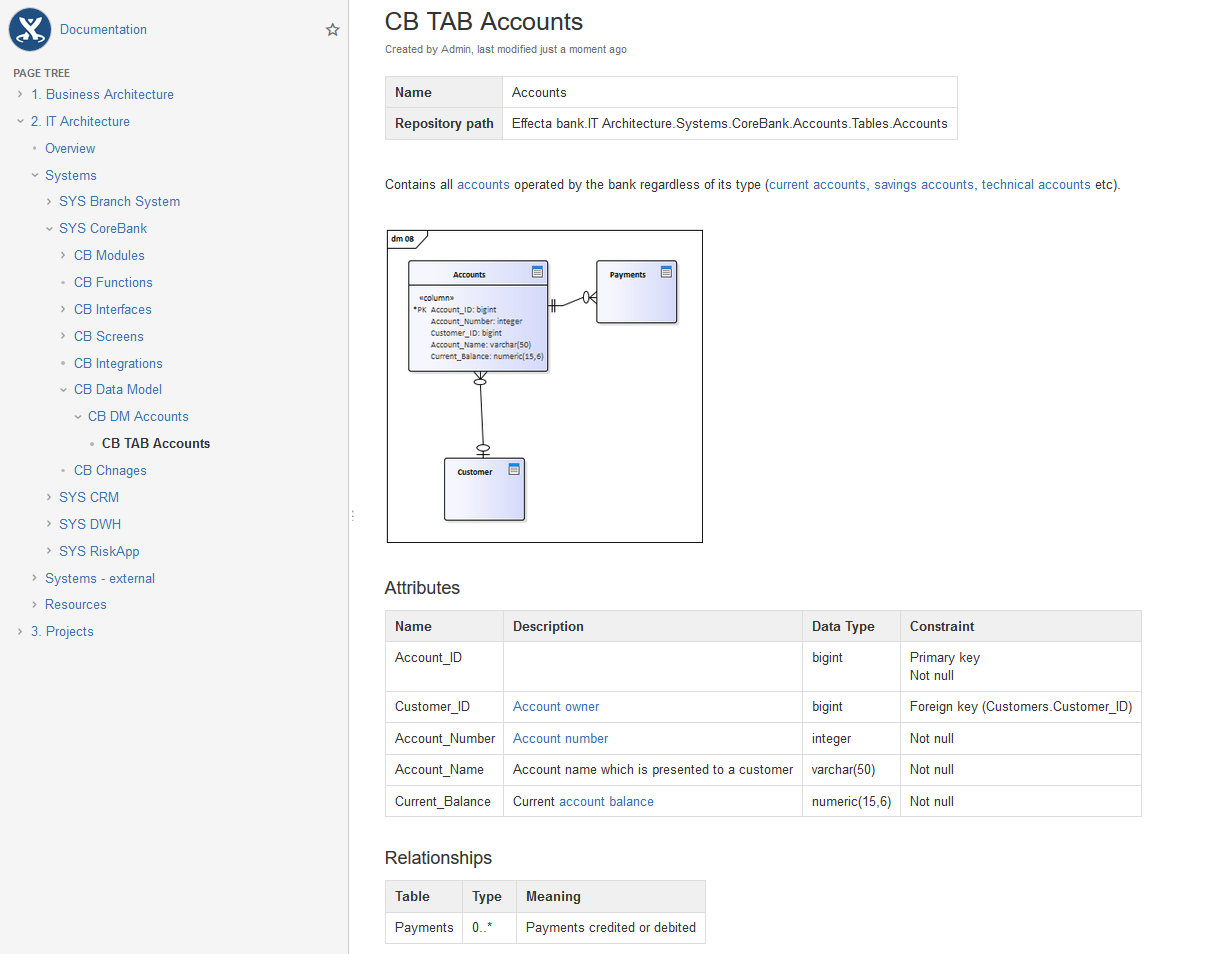Table
A table represents a persistent data structure for which it is important to document what data entity it holds, what are the attributes of the entity, and how it is related to other entities:
- Description - defines the purpose and meaning of the table. It should clearly state what type of data it holds. A precise definition prevents other people from adding columns that logically do not belong to the table.
- Attributes - list of data fields (columns) including their meaning, data types and constraints (private key, foreign key, etc.)

- Relationships - If there is a link between an account and a customer, it must be clear what relationship it represents. Does the customer own the account? Does the customer just have a privilege to manage the account?

- Optionally, a relevant part of the ER-diagram could be included to describe the data structure visually

All information can be generated automatically from Enterprise Architect.
Automation
Since the table artifact is basically a representation of the real database table, it is very easy to automate its documentation. Each database has its own schema, which actually describes the tables and the relationships between them. As a result, it is straightforward to automatically process the schema and recreate it in the form of table elements in Enterprise Architect. Then it is easy to generate documentation using middleware:


